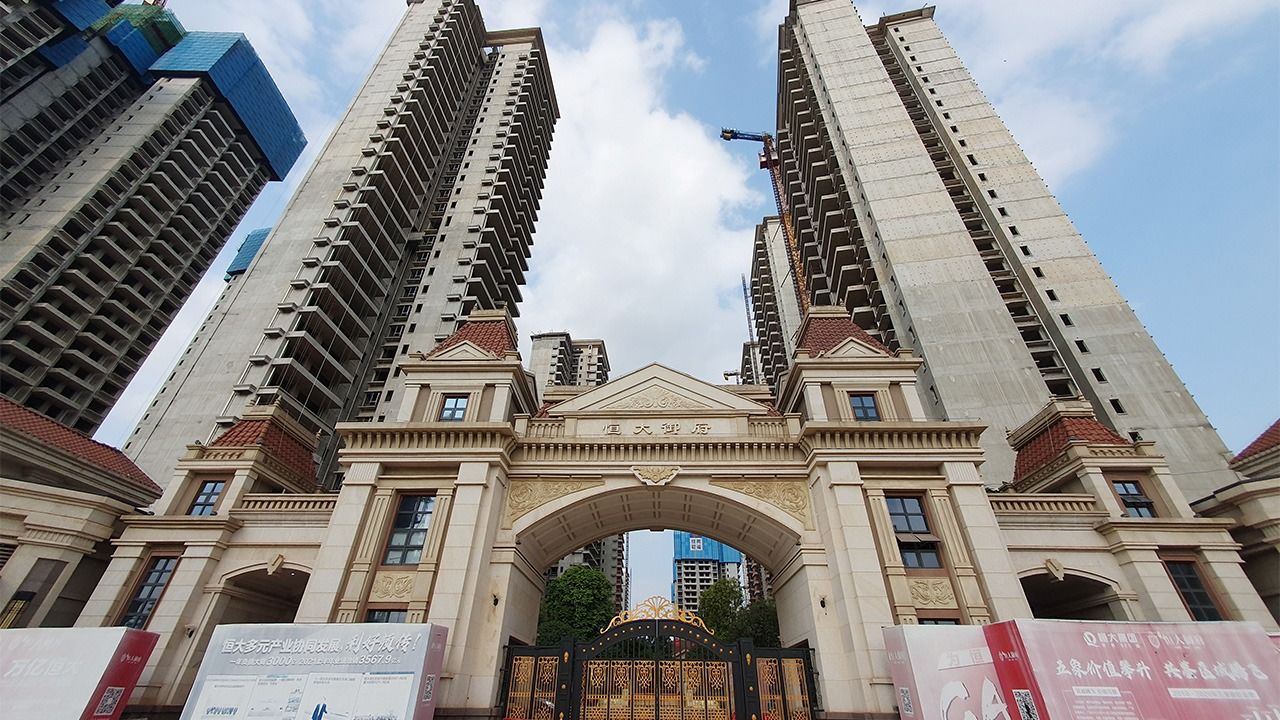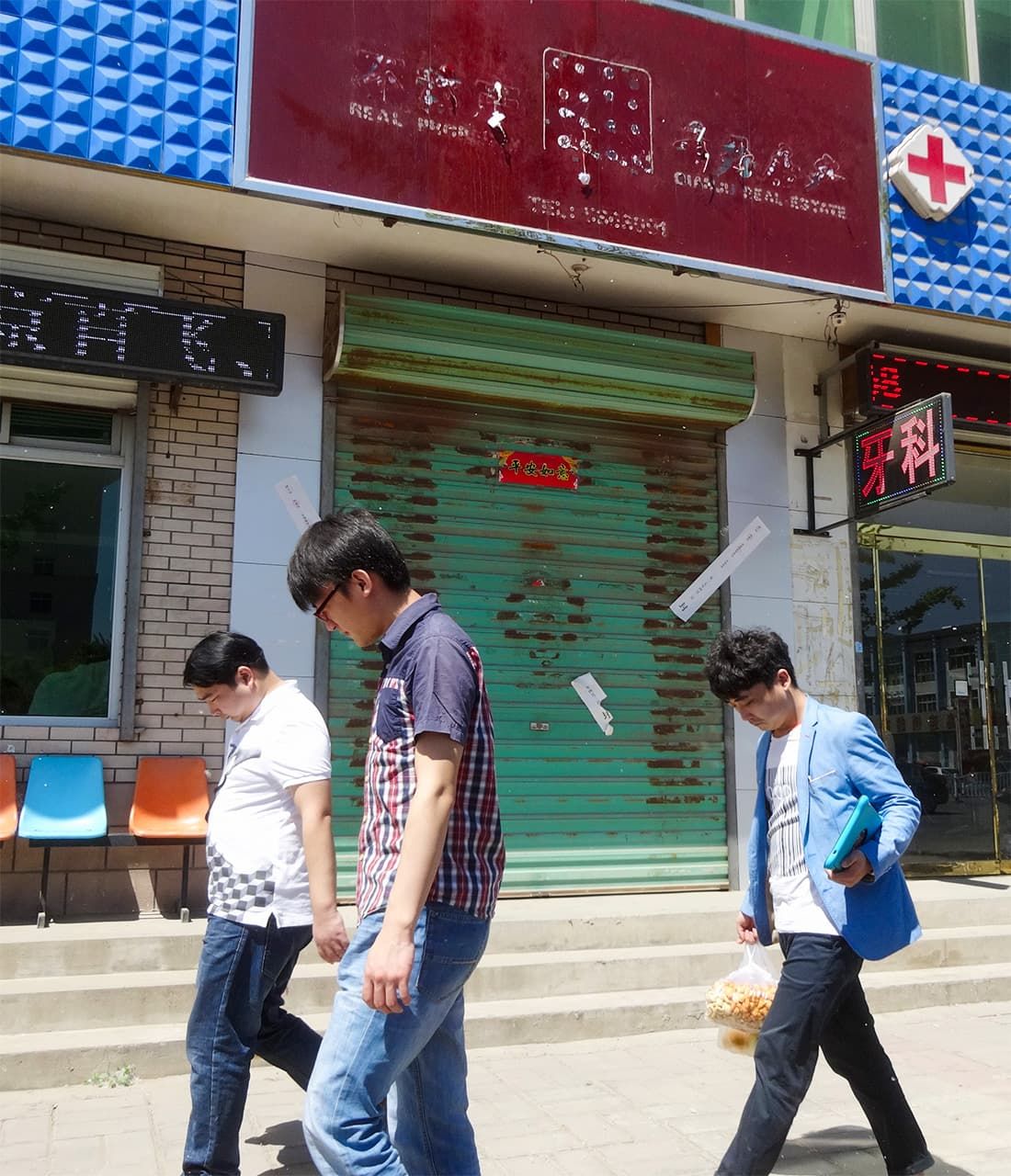
With “Xinomics” Caught in a Trap, China Will Not Join the Ranks of Advanced Economies
World Economy Politics Work- English
- 日本語
- 简体字
- 繁體字
- Français
- Español
- العربية
- Русский
An Investment Bubble Deflates
China’s GDP grew 0.8% over the previous quarter in April–June 2023. This is down from the 2.2% recorded in January–March, an indication that China’s economy has stalled. Rather than a delay in the recovery from the COVID-19 pandemic, this situation is better understood as ensuing from the ongoing collapse of a real estate bubble that has expanded for nearly 20 years.
In August 2020, a paper titled “Peak China Housing,” coauthored by Kenneth Rogoff, former chief economist of the International Monetary Fund and current Harvard University professor, warned that Chinese real estate prices were at a “potentially precarious peak.”
This paper estimated that the broadly defined real estate sector accounted for 30% of China’s GDP and that the activities of the real estate industry slumping by 20% would reduce GDP by 5% to 10%. In September 2020, one month after the publication of this paper, the financial difficulties of the major property developer Evergrande Group came to light.
The roots of the infrastructure and real estate bubble go deep. In June 2014, Bill Gates, the founder of Microsoft, tweeted a “staggering statistic,” attaching a chart showing that China used 6.6 gigatons of cement in the three years of 2011–13, surpassing the 4.5 gigatons used by the United States in the entire twentieth century.
An IMF database of global economic statistics shows that China’s total public and private investment has mostly exceeded 40% of GDP since 2004 (dipping to 39.8% in 2006), surpassing private consumption expenditures. No other economy in the database comes close to China’s situation.
Growing Old Before Becoming Prosperous
As indicated by the law of diminishing returns, investments made in succession will lead to diminishing returns and the accumulation of debt. A notable example is China’s high-speed rail network, which grew to a combined length of more than 40,000 kilometers in the 15 years since it was launched. This is longer than the earth’s circumference. However, most high-speed rail lines are not profitable, and the debt of the China State Railway Group Company has surpassed ¥120 trillion. Few people are moving to Xiong’an New Area, a new city promoted by President Xi Jinping, and its huge rail station is largely empty.

The office of a real estate agent in the sparsely populated Xiong’an New Area. (© Jiji)
Conditions are becoming critical for China’s economy. Real estate prices are continuing to fall. Consumption has stalled. Exports are decreasing. After maintaining the top position for 15 years, China is likely to be overtaken by Mexico in its share of US imports. A succession of foreign companies are shifting production from China to other countries.
While China’s current situation might call for public stimulus measures, many regional governments are facing fiscal crises from the sharp decline of profits on the sale of public land (usage rights), an important source of revenue for them.
Local governments have established around 10,000 local government financing vehicles to fund infrastructure investments, whose combined debt equals about ¥1.2 quadrillion. As the bad debts of these LGFVs accumulate, they risk triggering a financial crisis along with the banking sector, whose market capitalization has fallen sharply.
While there are those who argue that China is following the footsteps of Japan, the collapse of an asset bubble in Japan occurred after it had become an advanced economy. Should China, a middle-income nation, stagnate for the long term, its path toward becoming an advanced economy will be severed. With a lower birthrate than Japan, the prospect of Chinese people growing old before becoming prosperous will become a reality.
The unemployment rate of young people (16 to 24 years old) is at a record high of 21.3% in China. More than 11 million students are expected to graduate from university in 2023, which is likely to further increase the unemployment rate. The unemployment of migrant workers from the countryside, which is not reflected in economic statistics, is also increasing. China’s economy is in the midst of a slump.
A Correct Prescription
What has led China to this situation? There is a policy statement that may provide a hint: China 2030, a report published in February 2012, just before the start of the first Xi administration.
Begun at the initiative of Robert Zoellick, then president of the World Bank, this report was jointly authored by the staff of the World Bank and the Development Research Center of the State Council of China. In its introduction, the report states as its aim as having China avoid the middle-income trap and of building a modern, harmonious, and creative high-income society.
The report emphasized the complete transition to a market economy. One out of four state-owned enterprises are operating at a loss. Such enterprises also fall behind private enterprises in the rate of productivity growth. The report called for the free entry of private enterprises into industries dominated by SOEs, including defense, electric power, petroleum, petrochemicals, telecommunications, coal, air transport, and water transport.
The report also stated that the government would need to transform itself into a lean, clean, transparent, and highly efficient modern government that operates under the rule of law.
Turning Its Back on Advice
However, the Xi administration that soon followed did not privatize state-owned enterprises. Rather, it proceeded to merge and strengthen them to build bigger, better, and stronger SOEs.
Xi’s government also compelled foreign companies to install Communist Party members within their organizations. This is a policy of “the Communist Party advances, the private sector retreats” rather than “state enterprises advance, the private sector retreats.”
The administration also took steps that appear as the outright persecution of private enterprises. Huge fines were imposed on the Alibaba Group and Tencent Holdings, both leading Chinese high-tech firms. Jack Ma, the founder of Alibaba, was effectively purged from Chinese economic circles.
China’s banning of cram schools two years ago is reported to have caused more than 10 million people to lose their jobs. Cram school teachers and other jobs for highly educated persons disappeared in a flash.
Eleven years ago, the day after China 2030 was released, World Bank President Zoellick held a press conference in Beijing. A self-described independent scholar intruded into the conference room and shouted such slogans as “No to the privatization of state-owned enterprises” and “World Bank, go back to America,” bringing the press conference to an end.
The economic policies of the Xi administration, or “Xinomics”—which did not consider World Bank advice, and even took the opposite direction—can be likened to this intruder. China may have only itself to blame if it falls into the middle-income trap.
(Originally published in Japanese. Banner photo: A building of China’s Evergrande Group under construction in Nanning, Guangxi Zhuang Autonomous Region, China in May 2023. © Jiji.)